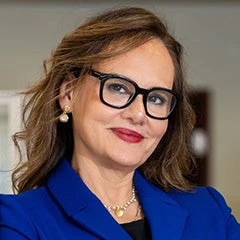 Mujer profesional en República Dominicana. iStock
Mujer profesional en República Dominicana. iStock
In my nearly four years of living in the Dominican Republic, I have met girls with a natural talent for math and sciences, women who help other women succeed, and businesswomen who have made their way in a male-dominated world . Dominican women have an immense potential.
However, this potential is far from being fully realized.
According to the World Bank's recent poverty assessment, economic growth in the Dominican Republic between 2004 and 2019 was nearly three times higher than the average for Latin America and the Caribbean, but poverty did not decline at the same pace. Women are the most affected by the lack of opportunities and stagnant incomes, the main factors behind this paradox. In the Dominican Republic, poverty is increasingly young and female .
This scenario is compounded by social norms and cultural restrictions that condition women from childhood to old age, creating a glass ceiling that few manage to break.
That is why at the World Bank, we have launched a gender assessment to contribute to developing possible solutions that close these gender gaps.
The Dominican Republic Gender Assessment
The gender assessment identifies several critical points that form a vicious circle: girls are victims of a violent school environment - with nearly half of the 12-year-old students reporting having experienced some form of school harassment, the highest figure in the region. These situations often lead to early sexual relations, followed by teenage pregnancies (with a rate that, if the trend continues, could surpass that of lower-income countries in the world), and subsequently, to school dropout.
With children and a household to take care of, often without receiving child support from the baby's father, returning to school becomes an almost impossible task . Without completing school, they can hardly obtain formal and well-paid jobs. On top of this, the wage gap with men and patriarchal beliefs and norms that are often visible in workplace harassment hinder women's potential. As a result, women experience a lack of economic autonomy, and poverty becomes a destiny that they cannot change, neither for themselves nor for their daughters.
According to estimates from the gender assessment, the loss of human capital wealth for the Dominican Republic due to gender inequality represented USD 185.4 billion in 2018, equivalent to 2.2 percent of that year's Growth Domestic Product.
Three ways to promote women's potential:
- Invest in education and health. Improve the quality of education with trained teachers who ensure safe and harassment-free environments. Invest in health and interventions to strengthen young women's employability.
- Ensure economic opportunities. Reduce wage gaps, improve access to credit, and achieve parity in leadership positions.
- Address biases and cultural norms. Secure that the voice and agency of Dominican women are prioritized on the agenda.
From a vicious circle to a virtuous circle
The good news is that we are not starting from scratch. There are numerous initiatives both from the government and from civil society and the private sector, such as Girls' Clubs and Soy niña, soy importante (I am a girl, I am important), which seek to transform this vicious circle into a virtuous one.
At the World Bank, we are committed to empowering the lives of Dominican women. That is why we have integrated the gender perspective into all of our operations strategy and analytical studies. For example:
- The National Housing project prioritizes households led by women, pregnant women, and girls.
- The Water Sector Modernization project promotes the hiring of women in technical and managerial positions.
- The Integrated Social Protection Inclusion and Resilience Project promotes inclusion with a focus on women-led households.
- In addition to the gender and the poverty assessments, which shed light on the main gender gaps, the World Bank's safeguards framework identifies risks in the projects we finance, such as segregation, violence, discrimination, abuse, and sexual exploitation, and proposes actions for their mitigation.
No country can truly thrive if half its population doesn't have guaranteed well-being, let alone the ability to pursue their dreams and aspirations. The Dominican Republic's development goals depend on prioritizing the women's agenda. It is clear that if we close the gap, we all win.
Suscribe and receive a weekly article
Related articles
- Ending gender-based violence is a priority for the World Bank
- In the Dominican Republic, child marriage is not only a moral issue, but an economic one as well


Join the Conversation